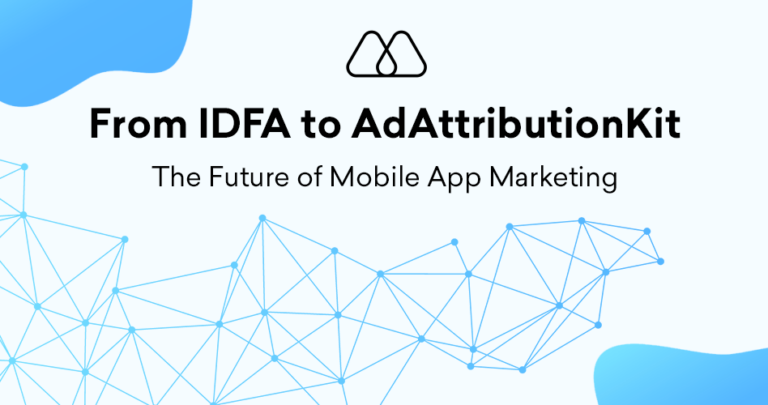In the dynamic world of mobile advertising, achieving success hinges on efficient user acquisition strategies. Cost per action (CPA) stands as a cornerstone metric for measuring the effectiveness of these strategies, allowing you to pinpoint the exact cost associated with acquiring a user who completes a desired action within your app. This article delves into the concept of CPA in mobile advertising, exploring its definition, functionalities, advantages and limitations, and advanced optimization strategies to maximize its value for your app marketing campaigns.
What is the Cost Per Action (CPA) in Mobile Advertising?
Cost per action (CPA) is a performance-based advertising pricing model used in mobile advertising. Simply put, you only pay the advertiser when a user clicks on your ad and completes a predefined action within your app. This action could be anything from downloading your app and completing a signup process to making an in-app purchase or achieving a specific level within the app.
How Does CPA Work in Mobile Advertising?
Here’s a breakdown of the CPA workflow in mobile advertising:
- Campaign Setup: You define the desired action within your app that constitutes a conversion (e.g., app install, in-app purchase).
- Bidding Strategy: You set a maximum cost you’re willing to pay for each conversion through the chosen advertising platform.
- Campaign Launch: Your ad is displayed across various mobile networks and publisher apps based on your targeting criteria and bid settings.
- User Acquisition: Users who find your ad and are interested in your app offering click on it.
- Conversion Tracking: The user clicks on the ad and completes the predefined action within your app, registering a conversion.
- Cost Calculation: The advertising platform tracks conversions and bills you based on the pre-determined CPA you set for each conversion.
Benefits of Utilizing CPA in Mobile Advertising
Cost Per Action (CPA) offers several advantages for mobile app marketers seeking to optimize user acquisition efforts:
- Performance-Based Pricing: You only pay for results, ensuring your advertising budget is spent efficiently on users who actively engage with your app and complete the desired action.
- Measurable ROI: CPA allows clear measurement of your return on investment (ROI) for mobile advertising campaigns. By dividing total ad spend by the number of conversions, you can directly assess the cost of acquiring valuable users.
- Targeted User Acquisition: CPA campaigns can be tailored to target specific user demographics and interests most likely to convert within your app, leading to a higher quality of acquired users.
- Campaign Optimization: By analyzing CPA data across different ad creatives, targeting strategies, and placements, you can identify areas for improvement and optimize your campaigns for better performance.
- Reduced Risk: CPA mitigates financial risk compared to cost-per-thousand (CPM) models where you pay for ad impressions regardless of user actions. You only incur costs when users demonstrate genuine interest by completing the desired action.
Limitations of CPA in Mobile App Advertising
While offering significant benefits, Cost Per Action also has limitations to consider:
- Limited Control over Traffic Source: With CPA, you relinquish some control over the specific traffic sources where your ad is displayed. The advertising platform optimizes ad placement based on conversion likelihood.
- Reliance on High Conversion Rates: The success of CPA campaigns hinges on achieving a healthy conversion rate. If your app’s conversion rate is low, the overall cost per action can become expensive.
- Not Ideal for Branding Efforts: CPA is focused on driving conversions and user acquisition. It might not be the most suitable model for brand awareness campaigns where top-of-funnel exposure is the primary objective.
- Potential for Click Fraud: In rare instances, click fraud can occur where fraudulent clicks are generated to inflate conversion numbers. Utilizing reputable advertising platforms and implementing fraud prevention measures helps mitigate this risk.
Advanced Strategies for Optimizing CPA Campaigns in Mobile Advertising
Here are some advanced strategies to maximize the effectiveness of your CPA campaigns:
- Landing Page Optimization: Ensure your app store listing or post-click landing page is well-designed, informative, and optimized for conversions. A seamless user experience post-click can significantly impact your CPA.
- A/B Testing Ad Creatives: Continuously test different ad formats, headlines, visuals, and CTAs to identify the variations that resonate best with your target audience and drive higher conversion rates, ultimately lowering your CPA.
- Leverage Lookalike Audiences: Utilize lookalike audiences based on existing high-value users to target new users with similar characteristics, increasing the likelihood of conversions and lowering CPA.
- Dynamic Bidding Strategies: Explore dynamic bidding strategies where the advertising platform automatically adjusts your bids in the present time to optimize for conversions within your pre-defined CPA budget. This helps ensure you acquire users at the most efficient cost.
- Utilize Retargeting Campaigns: Implement retargeting campaigns to re-engage users who have previously interacted with your ad but haven’t converted. This allows you to showcase additional value propositions and potentially convert them at a lower CPA versus acquiring new users.
5 Key Takeaways from Cost Per Action (CPA)
- Performance-Based Pricing: You only pay for users who complete desired actions within your app.
- Measurable ROI: CPA allows for the precise calculation of return on investment for your mobile advertising efforts.
- Targeted User Acquisition: Focus on acquiring users most likely to convert through targeted CPA campaigns.
- Campaign Optimization: Analyze CPA data to identify areas for improvement and optimize campaigns for better performance.
- Reduced Risk: Mitigate financial risk by only paying for valuable user actions.
Cost per action (CPA) represents a powerful tool in the mobile app advertiser’s arsenal. By understanding its functionalities, advantages, limitations, and advanced optimization strategies, you can leverage CPA to acquire high-value users for your app, achieve a positive return on investment, and propel your mobile app’s growth. A data-driven approach to Cost-Per-Action (CPA) campaign management and continuous optimization efforts, empowers you to acquire users efficiently and achieve your mobile app marketing objectives.




